 EUR/USD: Why the Dollar Continues to Rise
EUR/USD: Why the Dollar Continues to Rise
We titled our last week’s review "Why the Dollar Rose" and detailed the reasons for the strengthening of the American currency. It's fitting to name today's fresh review "Why the Dollar Continues to Rise," and naturally, we will answer this question.
 EUR/USD: Why the Dollar Rose
EUR/USD: Why the Dollar Rose
We named the previous review "Market at a Crossroads." We can now say that it finally made a decision and chose the dollar last week. Starting from 1.1018 on Monday, May 8, EUR/USD reached a local low of 1.0848 on Friday, May 12. Interestingly, this growth occurred despite the cooling of the U.S. economy. Not even the prospects of a U.S. debt default or the possibility of a reduction in federal fund rates could stop the strengthening of the dollar.
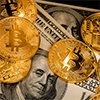 EUR/USD: The Market Is at a Crossroads
EUR/USD: The Market Is at a Crossroads
Everything happened as it was supposed to. The Federal Open Market Committee (FOMC) of the US Federal Reserve raised the federal funds rate by 25 basis points (bps) to 5.25% during its meeting on May 2 and 3. Similarly, the European Central Bank did the same on May 4, increasing the euro interest rate by the same 25 bps to 3.75%. This increase had long been factored into market quotations. Of much greater interest were the statements and press conferences of the leaders of both central banks.
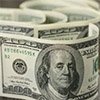 EUR/USD: Awaiting Fed and ECB Meetings
EUR/USD: Awaiting Fed and ECB Meetings
The main factor determining the dynamics of the US Dollar Index (DXY) and, consequently, the EUR/USD pair last week was… silence. If recently, the speeches of Federal Reserve representatives were almost the most important market guide, then a silence regime has been in effect since April 21. Leading up to the press conference by Fed Chairman Jerome Powell following the FOMC's May meeting, all officials are instructed to maintain silence. Only a few days remain until the FOMC (Federal Open Market Committee) meeting, where a decision regarding the regulator's future monetary policy will be made, scheduled for May 2/3. Furthermore, on Thursday, May 4, there will be a meeting of the European Central Bank, where an interest rate decision will also be made. In general, the upcoming five-day period promises to be, at the very least, not dull.
 EUR/USD: Rate Forecast: USD +0.25%, EUR +0.50%
EUR/USD: Rate Forecast: USD +0.25%, EUR +0.50%
Due to the lack of significant economic news, the EUR/USD dynamics in recent days has been determined by statements by representatives of mega-regulators regarding interest rate hikes at the upcoming meetings of the US Federal Reserve on May 2/3 and the ECB on May 4.
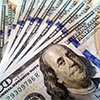 EUR/USD: The Dollar Continues to Sink
EUR/USD: The Dollar Continues to Sink
The DXY dollar index updated a 12-month low last week, and EUR/USD, respectively, rose to a maximum (1.1075) since April 04, 2022. The US currency has been falling for the fifth week in a row: the longest series since summer 2020.
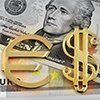 EUR/USD: Fed rate Divination Continues
EUR/USD: Fed rate Divination Continues
The dollar seems to be either weakening or not. On the one hand, the DXY dollar index updated a two-month low on April 4, falling below the support of 101.50, and EUR/USD rose to a new high of 1.0972. On the other hand, the pair returned by the end of last week to where it had already been on March 23 and 31.
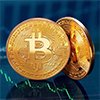 EUR/USD: Why the Dollar Fell
EUR/USD: Why the Dollar Fell
Last week passed without sharp jumps. The dollar continued to fall in price, and EUR/USD returned by March 30 to where it was traded seven days before. The local maximum was fixed at 1.0925, and the five-day period finished at 1.0842.
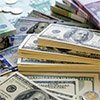 EUR/USD: ECB Not Fazed by Banking Crisis
EUR/USD: ECB Not Fazed by Banking Crisis
The past week was marked by a large black candle when EUR/USD plummeted from 1.0759 to 1.0515. And this happened not on Thursday, March 16, when the ECB made a decision on the interest rate, but the day before. The reason for the weakening of the European currency was none other than the head of the National Bank of Saudi Arabia.
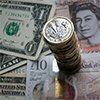 EUR/USD: USA Labor Market Stops USD
EUR/USD: USA Labor Market Stops USD
Jerome Powell played on the dollar side last week. Of course, the Fed Chairman knew that markets expected an interest rate increase of 25 basis points (bps) from the next FOMC (Federal Open Market Committee) meeting. But he did not rule out that his organization could take a more decisive step in an effort to curb inflation and raise it by 50 bp on March 22 at once. Moreover, it had been earlier expected that the rate would reach 5.00-5.25% at the peak. Now Powell and his colleagues do not rule out that its maximum value will be 5.50%. (According to Commerzbank strategists, even an increase to 6.00% is possible).
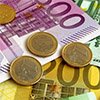 EUR/USD: Pause in the 1.0600 Zone
EUR/USD: Pause in the 1.0600 Zone
On Thursday, March 02, the DXY dollar index broke again through the bar at 105.00 points but could not stay there. As usual, the dollar was supported by an increase in US government bond yields. The yield on 10-year securities rose to its high since November 10 at 4.09%, the yield on 2-year securities rose to 4.91% and updated its maximum since 2007. The revision of US labor market statistics in Q4 2022 and the ISM Manufacturing Business Activity Index (PMI) in the country's manufacturing sector also supported the US currency. On the other hand, the dollar was pressured by the yuan, which is getting stronger against the backdrop of macro-economic statistics from China. The PMI manufacturing index in China was the highest since 2012. Activity in the service sector has also increased, and the Chinese real estate market has stabilized.
 EUR/USD: FOMC Protocol Strengthens the Dollar
EUR/USD: FOMC Protocol Strengthens the Dollar
Macroeconomic statistics in both the US and the Eurozone look mixed. In both regions, inflation is slowing down (which is good), but GDP growth is also decreasing (which is bad for the economy). According to the US Department of Commerce, the pace of consumer spending growth in the country for Q4 was +1.4% after +2.3% in Q3 (forecasted at +2.1%). The US GDP growth rate on an annual basis, according to preliminary estimates, will be lower than expected, +2.7% (forecast and previous value +2.9%). However, despite this, labour market statistics look positive enough. The number of initial claims for unemployment benefits, forecasted at 200K, actually decreased from 195K to 192K. According to final data from Eurostat, inflation in the Eurozone slowed down to +8.6% YoY in January (+9.2% a month earlier). Things are becoming more difficult in Germany, the main locomotive of the European economy. According to January data, the annual inflation rate was +9.2% compared to +9.6% in December, but at the same time, the country's GDP also went down, with a decline of -0.4% (forecast and previous value -0.2%). The very fresh February CPI data did not please either, showing an increase from +8.1% to +8.7%.
 EUR/USD: The Fed Doesn't Hinder the US Economy
EUR/USD: The Fed Doesn't Hinder the US Economy
January data released on Tuesday, February 14 showed that the US Federal Reserve's victory over inflation is still very, very far away. The core Consumer Price Index (CPI) remained unchanged on a monthly basis at +0.4%. At the same time, although the annual data were slightly lower than the previous value: +6.4% against +6.5%, they exceeded the forecast of +6.2%. Another portion of American statistics came out the next day, February 15. After two months of decline, retail sales in the US showed the highest growth rate in almost 2 years, jumping from -1.1% in December to +3.0% in January (against the forecast of +1.8%).
 EUR/USD: The Fed's Doves Have Turned into Hawks Again
EUR/USD: The Fed's Doves Have Turned into Hawks Again
After the US Federal Reserve and ECB meetings, the DXY Dollar Index fell to a new 9-month low of 100.80 on February 02. This happened after the dovish hints of the head of the Fed, Jerome Powell, who, during a press conference following the meeting, admitted for the first time that "the deflationary process has begun." The market has decided that this is the beginning of the end, and that the end of the bullish wave is near.
 EUR/USD: Three Weeks of Uncertainty
EUR/USD: Three Weeks of Uncertainty
The meetings of the Central Banks were held strictly according to plan last week. As expected, the key rate was raised by 25 bps (basis points) at the US Federal Reserve meeting and reached 4.75%, and by 50 bps at the European Central Bank meeting, up to 3.00%. Since the decisions themselves did not bring surprises, market participants focused on the regulators' plans for the future.
 EUR/USD: Next week: Five Days of Storms and Tsunamis
EUR/USD: Next week: Five Days of Storms and Tsunamis
It seems that the whole world celebrated the Chinese New Year last week. There was some volatility in all major currency pairs of course, but we got an almost perfect sideways trend in the end. We will not deny the importance of the New Year holidays, but the reason for the lull, of course, is not in this, but in the key events that are coming next week.
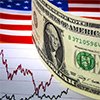 EUR/USD: The Calm Before the Storm
EUR/USD: The Calm Before the Storm
The DXY Dollar Index (the ratio of the USD to a basket of six other major foreign currencies) has been moving in a fairly narrow sideways channel since January 12. A small surge in volatility was caused by the publication of data on retail sales in the US on Wednesday, January 18. However, everything returned to normal quickly, and DXY continued its eastward journey, sandwiched in the 102.00-102.50 range. EUR/USD behaved similarly, which, having started on Monday at 1.0833, completed the five-day period at 1.0855.
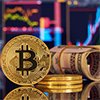 EUR/USD: Low Inflation Has Dropped the Dollar
EUR/USD: Low Inflation Has Dropped the Dollar
The main event of the past week, which dealt another blow to the dollar, was the publication on Thursday, January 12, of data on consumer inflation in the US. The actual figures were fully in line with market expectations. The consumer price index (CPI) in annual terms fell to its lowest level since October 2021 in December: from 7.1% to 6.5%, and excluding food products and energy, from 6.0% to 5.7%. Thus, the US inflation rate has been slowing down for 6 months in a row, and core inflation has been slowing down for 3 consecutive months, which is a strong catalyst for easing the Fed's current monetary policy.
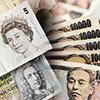 We talked a week ago about how economists from the world's leading financial institutions see the future of EUR/USD in 2023. However, our reviews have included two more major pairs for many years, USD/JPY and GBP/USD. And it would be unfair to ignore them this time. Moreover, after the euro, the Japanese yen and the British pound are the most significant components in the formation of the US Dollar Index DXY (13.6% and 11.9%, respectively).
We talked a week ago about how economists from the world's leading financial institutions see the future of EUR/USD in 2023. However, our reviews have included two more major pairs for many years, USD/JPY and GBP/USD. And it would be unfair to ignore them this time. Moreover, after the euro, the Japanese yen and the British pound are the most significant components in the formation of the US Dollar Index DXY (13.6% and 11.9%, respectively).
But in addition to forecasts for the future, we will traditionally tell you what the experts' expectations were regarding the past, 2022, and how close they turned out to be.
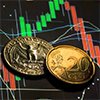 We analyzed last week what happened to the two most popular currencies in 2020-2022, what forecasts were given then by the strategists of leading financial institutions for EUR/USD, and how accurate they turned out to be. Now it's time to tell what experts expect from 2023.
We analyzed last week what happened to the two most popular currencies in 2020-2022, what forecasts were given then by the strategists of leading financial institutions for EUR/USD, and how accurate they turned out to be. Now it's time to tell what experts expect from 2023.
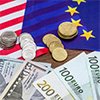 Traditionally, we publish currency forecasts from the world's leading financial institutions at the turn of the outgoing and coming years. We did this two years, and a year ago. Therefore, we can not only look into the future now, but also analyze whether experts were right in the past.
Traditionally, we publish currency forecasts from the world's leading financial institutions at the turn of the outgoing and coming years. We did this two years, and a year ago. Therefore, we can not only look into the future now, but also analyze whether experts were right in the past.
 EUR/USD: The Fed Doesn't Want to be Dovish. The ECB Either.
EUR/USD: The Fed Doesn't Want to be Dovish. The ECB Either.
The past week can be divided into two parts: before and after the FOMC (Federal Open Market Committee) meeting of the US Federal Reserve. The US inflation data produced a bombshell effect on the eve of this event, on Tuesday, December 13. The Consumer Price Index (CPI), with the forecast at 7.3%, fell in November from 7.7% to 7.1% (y/y), reaching its lowest level in almost a year, while core inflation fell from 6.3% to 6.0%. As a result, the market decided that since things were going so well, it was time for the Fed to turn from hawk to dove. Or at least ease their monetary policy significantly. Based on these expectations, the 10-year Treasury bond yield fell from 3.60% to 3.43%, and the DXY Dollar Index peaked and fell to its lowest levels over the past six months, from 105.07 to 103.60 points. Accordingly, stock indices (S&P500, Dow Jones, Nasdaq) flew up, and EUR/USD jumped to 1.0672.
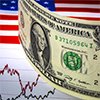 EUR/USD: Ahead of the Fed and ECB Meetings
EUR/USD: Ahead of the Fed and ECB Meetings
Two key events await us next week. The first is the FOMC (Federal Open Market Committee) meeting of the US Federal Reserve, which will be held on Wednesday, December 14. Recall that the key interest rate on the dollar is 4.00% at the moment, and that Fed Chairman Jerome Powell confirmed on November 30 that the pace of rate growth may slow down in December. These words of his convinced market participants that the rate would be increased in December not by 75 basis points (bp), but by only 50 bp. The actual developments on December 14 will set the mood of the regulator for 2023. Naturally, an important role here will be played not only by the decision on the interest rate itself, but also by the economic forecasts of the FOMC and the press conference of the management of this organization following the meeting.
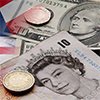 EUR/USD: Focus on the US Labor Market
EUR/USD: Focus on the US Labor Market
The DXY dollar index is down 5% over the past month. This is the largest monthly decline since September 2010. And the American currency lost more than 10% against the euro over the same period. EUR/USD was trading at 0.9541 back on October 28, and it reached the high of 1.0544 on December 2. There are several reasons for this, and the main one, of course, lies in the US Federal Reserve's interest rate forecasts.
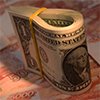 EUR/USD: FOMC Protocol Dropped the Dollar
EUR/USD: FOMC Protocol Dropped the Dollar
Last week ended quietly: the US celebrated Thanksgiving. But its first part was marked by the weakening of the dollar, as a result of which EUR/USD rose by more than 200 points, from 1.0222 to 1.0448. It has risen above its 200-day moving average (SMA) for the first time in 17 months, since June 16, 2021.
 EUR/USD: The Pair Is at a Crossroads
EUR/USD: The Pair Is at a Crossroads
We wondered at the beginning of the last review if the dollar rally had come to an end. Let us recall that the US inflation data published on November 10 turned out to be significantly better than both previous values and forecasts. Core consumer inflation (CPI) rose by 0.3% in October, which was lower than both the forecast of 0.5% and the previous September value of 0.6%. The annual growth rate of core inflation slowed down as well to 6.3% (against the forecast of 6.5%, and 6.6% a month ago).
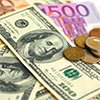 EUR/USD: Is the Dollar's Growth Over?
EUR/USD: Is the Dollar's Growth Over?
Has the dollar rally come to an end? The answer to this question sounds more and more affirmative day by day. The reason for the weakening of the US currency lies in the interest rate of the Fed. This, in turn, depends on the state of the labor market and inflation in the US, which determine the regulator's monetary policy.
 EUR/USD: Slower, Longer, Higher
EUR/USD: Slower, Longer, Higher
Overall, last week passed, as predicted, without any majorsurprises. The main event was the FOMC (Federal Open Market Committee) meeting of the US Federal Reserve on Wednesday, November 2, at which it was unanimously decided to raise the key rate by 75 basis points (bp) to 4.00%. This is the highest level since 2008. Such a move was quite expected. Therefore, the subsequent press conference of the regulator's management was of greater interest to market participants. Fed Chairman Jerome Powell said at the meeting that although inflation must be reduced "drastically", monetary policy parameters can be changed as needed. The hint was that the pace of rate hikes could slow down from December, but the final rate level would likely be higher than previously thought.
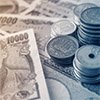 EUR/USD: Is the Interest Rate Race Close to Its End?
EUR/USD: Is the Interest Rate Race Close to Its End?
EUR/USD grew until Thursday, October 27, and even rose above the landmark level of 1.0000, reaching 1.0092. The reason for this, most likely, was the hope of a number of investors that the ECB would raise the rate not by 0.75, but by 1.0 or even more basis points (bp) at its meeting. However, their dreams remained dreams. There happened exactly what most market participants expected: the European regulator raised the rate by 0.75 bp, from 1.25% to 2.0%. (Although this figure is the highest over the past 10 years).
 EUR/USD: Market, Are You Crazy?
EUR/USD: Market, Are You Crazy?
Throughout the first half of the week, EUR/USD moved sideways along the 0.9700 horizon as markets waited for the release of US inflation data. And it was on Thursday, October 14 that the Department of Labor Statistics of the country published fresh values of the Consumer Price Index (CPI), which exceeded the forecast values. In monthly terms, the September CPI reached 0.6% against the forecast of 0.5%, in annual terms - 6.6% against the forecast of 6.5% and the previous value of 6.3%.